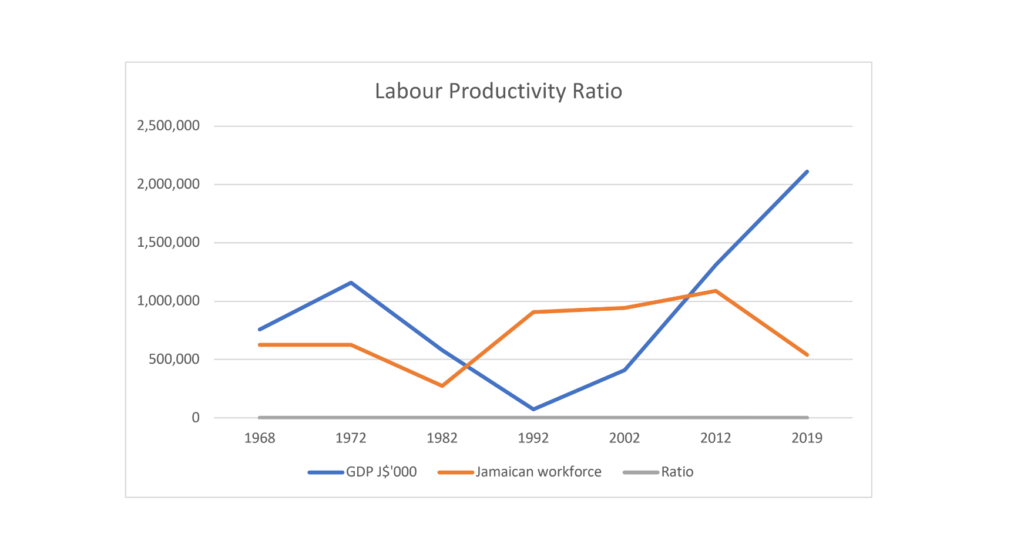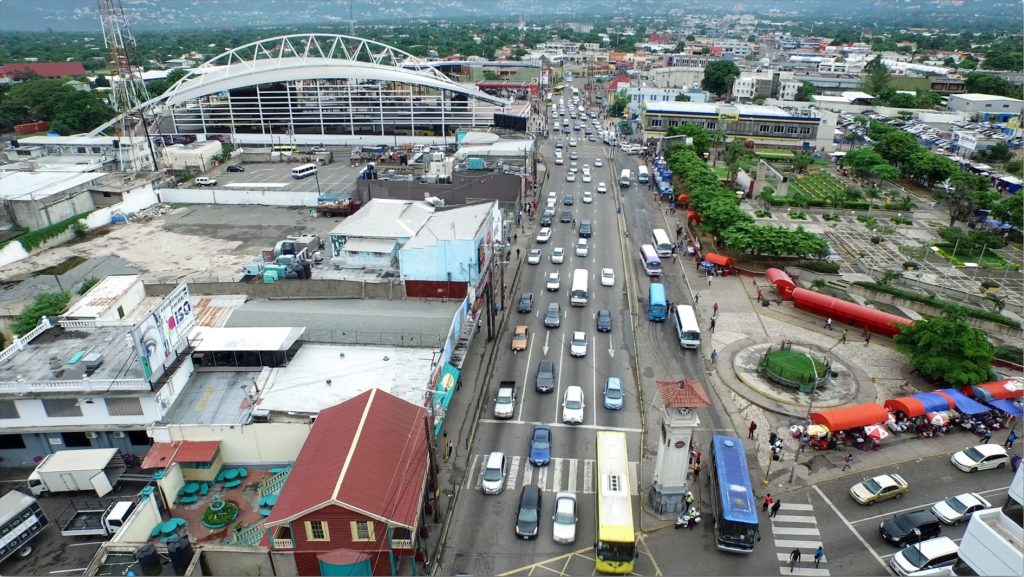

By Kent Gammon
Introduction
In the 1960’s, labour productivity, which represents the total volume of output (measured in terms of Gross Domestic Product, GDP) produced per unit of labour (measured in terms of the number of employed persons) during a given time reference period, was remarkably high in Jamaica.
The country’s average GDP was six per cent per year and Lee Kwan Yew was so impressed with Jamaica’s economic prowess at that time that he paid a visit to the island to observe what the island was doing back then. Since then Jamaica’s labour productivity has been in a steady decline to the point whereby the economy has stagnated, albeit it had an uptick in the late 1980’s, if not regressed since the 1970’s.
To compete effectively with countries of a similar profile and to improve Jamaica’s economic output the country must closely analyze the X-efficiency factors namely the environment, the management practices and the incentives to workers.

This article will examine how to improve the X-efficiency factors that persist and have persisted for too long in Jamaica and to lock in those variables
The X-efficiency factors peculiar to Jamaica?
In the wave of Trinidad investment in the late 1990s to early 2000s, they did a study on the environmental variables that affect productivity in Jamaica that was spot on. The study cited that profit was not a driving force in Jamaica but over-sensitivity to labour demands. This, in turn, directed resources away from profit-making activities to labour consumption activities. The work environment then in Jamaica lends itself to a cost inducing gap that breeds losses.

Whilst labour needs are obviously important it cannot sacrifice profit on the altar of labour demands. In the end, the entity gets poorer and less competitive as workers in Jamaica don’t reward generosity with more productivity.
I have consistently said that management practices in Jamaica are sub-par to optimal management practices in other similar profiled countries. This is why far too many companies in Jamaica have excess absenteeism, pilferage and insubordination.
Management is hamstrung in addressing these poor work patterns since 2011 when the Labour & Industrial Relations Act applied to all work contracts adding further costs to do business in Jamaica and encouraging slackness in the workforce.
This chart shows the regression of work productivity in Jamaica over key periods of time.
And as if Jamaica didn’t have enough indigenous problems in increasing the productivity quotient, the country has prohibitive electricity costs[1], rampant criminality and poor family values.
How to pick up the productivity quotient?

A major force in picking up the productivity quotient in Jamaica is to offer merit-based citizenship on a set of desirable criteria. It is also referred to as merit-based immigration.
A merit-based immigration system is an immigration system where a noncitizen’s eligibility to immigrate is (partly or wholly) determined by whether that noncitizen is able to score above a threshold number of points in a scoring system that might include such factors as education level, financial assets, connection with the country, language fluency, existing job offer where the skill is in high demand but the pool of labour in the country is low, or others.
The merit-based immigration would attract high skilled persons who would contribute a level of knowledge base lacking in the country and obviously up-skill the workforce.
There are so many countries in the world offering citizenship to the best and brightest across the world on a merit-based system why isn’t Jamaica not doing the same?
Jamaica is ideally located some ….miles from the largest market in the world, US, and if the country got some new entrepreneurial skills and ideas to infuse the Jamaican markets there is real promise in increasing the Gross National Product.

Is Vision 2030 Jamaica still on target?
In 2009, Vision 2030 Jamaica was launched by the Planning Institute of Jamaica (PIOJ), which was a great pathway to economic prosperity. I have not heard in many years any benchmarks being met on the road to achieving the targets set in that well laid put economic road map.
The only way Jamaica can hit the targets it set in the Vision 2030 Jamaica, to be the place of choice to live, work, raise families, and do business is if we overcome three deeply imbedded societal roadblocks to economic prosperity in this order; wholesome family values being inculcated, eliminating crime and being energy independent.
An economy’s enabling environment encompasses both formal and informal institutions; utilities and infrastructure such as transport, energy, water and telecommunications; as well as the framework conditions set by monetary and fiscal policy, and more broadly, public finances.
The GOJ is doing a good job on building infrastructure, which is critical to economic development and so far has tackled the fiscal debt in a manageable fashion. But Human capital—the capabilities and skills of individuals and populations—is a key driver of economic prosperity and productivity. The value of human capital is realized in the labour market through productive employment, and it is developed through education during the first two decades of an individual’s life as well as through mid-career training investments.

The GOJ has to strengthen the union of creating an enabling environment and enriching the country’s human capital. It can do so by offering greater tax breaks to married couples thus enhancing family values. Greater family values will automatically reduce if not eliminate crime. And Jamaica using more solarization technology, the country is has plenty of sunshine to draw from, can reduce its oil import bill.
The merit-based citizenship policy would then be the icing on the Vision 2030 Jamaica cake by attracting management skills that account for a large schism in the productivity quotient.
Kent Gammon is an attorney-at-law. Send feedback to editorial @our.today







Comments